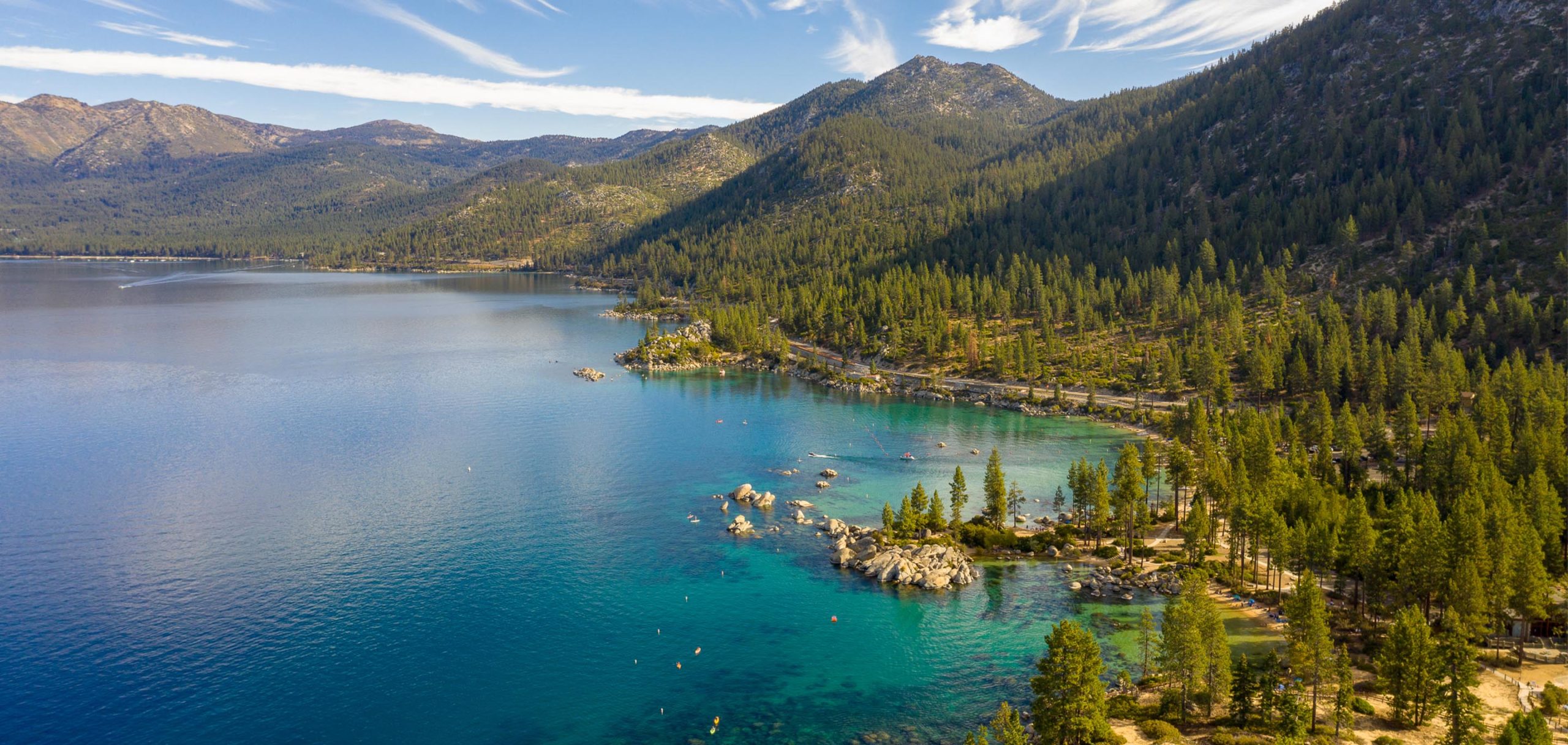The Lake was formed through faulting of the Earth’s crust, volcanism and glaciation.
About 25 million years ago, the Sierra Nevada block was formed by tremendous uplifting. The valley that later became the Tahoe Basin sank between two parallel faults as the mountains on either side rose. Water filled this Basin where Lake Tahoe lies today.
Lava flowing from Mt. Pluto on the north shore formed a barrier or dam across the basin’s outlet. Water from rivers and streams flowed into the Basin, gradually filling it several hundred feet above its present level.
During the last Ice Age, less than a million years ago, huge ice blocks or glaciers formed in the surrounding mountains. These glaciers scoured the landscape, carving broad, U-shaped valleys now occupied by Cascade Lake, Fallen Leaf Lake, and Emerald Bay. The material left after the glaciers melted, called moraines, blocked the original outlet of Lake Tahoe, changing it to the present Truckee River outlet at Tahoe City.


